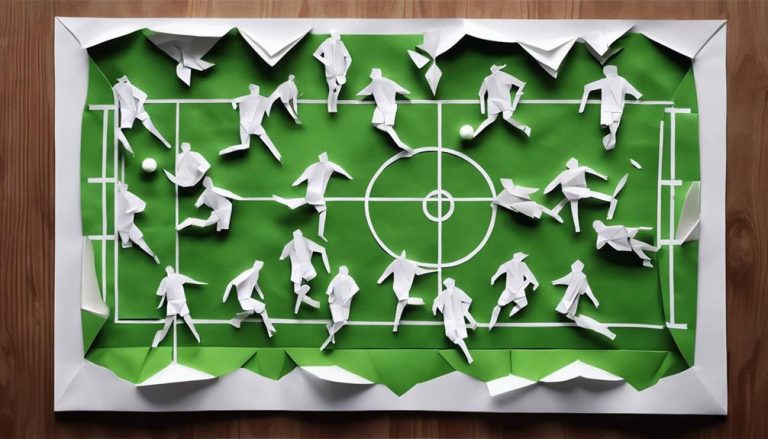General Rules of Snatch Weightlifting
When you step onto the platform for a snatch lift, did you know that the positioning of your hands can greatly impact the success of your lift? Proper grip and hand placement are fundamental in maximizing your performance. But that's just the beginning. To truly excel in snatch weightlifting, you'll need to understand and master a range of key principles that govern this dynamic and challenging lift. Each aspect plays a crucial role in achieving that perfect snatch, and by honing these skills, you can elevate your performance to new heights.
Proper Grip and Hand Placement
When gripping the bar for snatch weightlifting, ensure that your hands are placed evenly and securely to optimize performance and reduce the risk of injury. Proper finger positioning is crucial; wrap your fingers around the bar, making sure they are evenly spaced. This grip enhances control and stability during the lift. Additionally, pay attention to wrist alignment. Your wrists should be straight to allow for maximum power transfer from your arms to the bar.
Developing grip strength is essential for snatch weightlifting. Strengthening your grip helps you maintain control of the bar throughout the lift. Regularly work on exercises that target grip strength to improve your performance. Moreover, callus maintenance is often overlooked but is vital for a comfortable and secure grip. Keep your calluses in check to prevent them from tearing during intense lifting sessions.
Correct Stance and Foot Position
Ensure your feet are positioned shoulder-width apart and parallel to each other to establish the correct stance for snatch weightlifting. This foundational stance provides a stable base for executing the snatch with precision and power. Balance techniques play a crucial role in maintaining stability throughout the lift. Distributing your weight evenly between both feet helps optimize your balance, allowing for a more controlled and efficient movement.
To enhance your balance, focus on keeping your weight centered as you initiate the lift. Avoid leaning too far forward or backward, as this can disrupt your equilibrium and compromise the lift. By maintaining proper weight distribution, you can improve your overall stability and control during the snatch. Remember, a solid foundation starts from the ground up, and your foot position is key to achieving a successful lift. Practice maintaining the correct stance and foot position consistently to develop muscle memory and improve your snatch technique over time.
Timing and Coordination
To achieve optimal performance in snatch weightlifting, mastering the precise timing and coordination of your movements is essential. Timing and coordination play a crucial role in executing a successful snatch lift. Here are four key points to consider:
- Timing is Everything: Proper timing ensures that each phase of the lift flows seamlessly into the next, optimizing power output and efficiency.
- Coordination of Muscle Activation: Coordinating the activation of different muscle groups, such as the legs, back, and shoulders, is vital for generating the necessary force throughout the lift.
- Engagement of Core Muscles: Engaging your core muscles not only stabilizes your body but also enhances the transfer of power from the lower body to the barbell.
- Synchronization of Movements: The synchrony of your movements, from the initial pull off the floor to the final overhead lockout, determines the success of the lift. Each phase must be timed and coordinated precisely to achieve a smooth and powerful snatch. Mastering these elements will elevate your snatch weightlifting performance to new heights.
Bar Path and Trajectory
When performing the snatch in weightlifting, focusing on maintaining a straight bar path is crucial for optimal efficiency. By ensuring the bar follows a direct trajectory, you can minimize energy loss and maximize power output during the lift. Paying attention to the angle of the trajectory is essential to execute the snatch with precision and effectiveness.
Straight Bar Path
Maintaining a straight bar path is crucial in snatch weightlifting as it directly impacts the efficiency and effectiveness of the lift. To ensure you achieve the optimal straight bar path, focus on the following:
- Bar Speed: Consistent speed throughout the lift aids in keeping the bar on the correct path.
- Balance: Proper weight distribution and body positioning help in guiding the bar along a straight trajectory.
- Shoulder Mobility: Adequate mobility allows for the bar to move vertically without deviations.
- Power: Generating power from the lower body and transferring it efficiently is key to a smooth bar path.
Efficient Trajectory Angle
Ensuring an efficient trajectory angle in snatch weightlifting involves precise control over the bar path and trajectory throughout the lift. Optimal angles play a crucial role in maximizing power distribution during the snatch. Your goal is to maintain a trajectory angle that allows the barbell to move in a vertical path, close to your body. This optimal angle minimizes horizontal displacement, reducing the distance the barbell has to travel. To achieve this, focus on initiating the lift with a strong extension of the hips and knees, directing the barbell in a straight line upwards. Your body positioning and timing when pulling under the bar are key factors in maintaining the desired trajectory angle. Practice consistently to develop muscle memory for this efficient bar path.
Hip Extension and Explosiveness
To enhance your performance in snatch weightlifting, focus on maximizing hip extension and explosiveness through proper technique and training. Achieving optimal hip extension is crucial for generating power and speed in the snatch movement. Here are four key points to help you improve in this area:
- Power Development: Incorporate exercises like hip thrusts, Romanian deadlifts, and kettlebell swings into your training routine to strengthen the muscles involved in hip extension.
- Training Techniques: Practice explosive movements such as jump squats and power cleans to enhance your ability to generate power from the hips during the snatch.
- Muscle Activation: Focus on engaging your glutes, hamstrings, and lower back muscles to ensure maximum hip extension and explosiveness in the lift.
- Movement Analysis: Record your snatch lifts from different angles to analyze your hip extension pattern and identify any areas for improvement in explosiveness.
Overhead Stability and Lockout
Achieving solid overhead stability and lockout is essential for successful execution in snatch weightlifting, requiring precise coordination and strength in the upper body muscles. To achieve this, focus on core engagement and proper breathing technique to create a stable foundation. Additionally, ensure optimal shoulder mobility and wrist flexibility to support the weight overhead. The table below outlines key factors to consider for enhancing overhead stability and lockout in snatch weightlifting:
| Factors | Description | Importance |
|---|---|---|
| Core Engagement | Activating core muscles to stabilize the torso | High |
| Breathing Technique | Proper breathing patterns to support the lift | Medium |
| Shoulder Mobility | Adequate range of motion in the shoulders | High |
| Wrist Flexibility | Flexible wrists for a secure overhead position | Medium |
| Upper Body Strength | Strong upper body muscles to maintain the lockout | High |
Frequently Asked Questions
How Can I Improve My Grip Strength for Snatch Weightlifting?
To improve grip strength for snatch weightlifting, focus on using equipment like fat grips or grip strengtheners. Technique-wise, ensure proper form to reduce strain on your hands. Progress gradually, increasing weights and reps.
Are There Any Specific Warm-Up Exercises I Should Do Before Attempting Snatches?
Before attempting snatches, it's crucial to incorporate mobility drills to enhance range of motion and activation exercises to prime your muscles. This prepares your body for the dynamic movements involved in snatch weightlifting.
What Are Some Common Mistakes to Avoid When Performing Snatches?
When performing snatches, common mistakes to avoid include improper grip width, early arm bending, and not fully extending the hips. Focus on proper technique to improve form, prevent injuries, and maximize power output.
How Often Should I Incorporate Snatch Weightlifting Into My Training Routine?
You should aim to include snatch weightlifting in your routine 2-3 times a week. It's crucial for progression but remember to balance with recovery. Prioritize mobility work to enhance technique and prevent injury.
Are There Any Specific Drills or Exercises I Can Do to Help With My Overhead Stability in the Snatch?
Want to enhance overhead stability in the snatch? Focus on shoulder mobility and core stability. Try snatch balances, overhead squats, and Turkish get-ups. Strengthen those stabilizing muscles for a solid overhead position.






